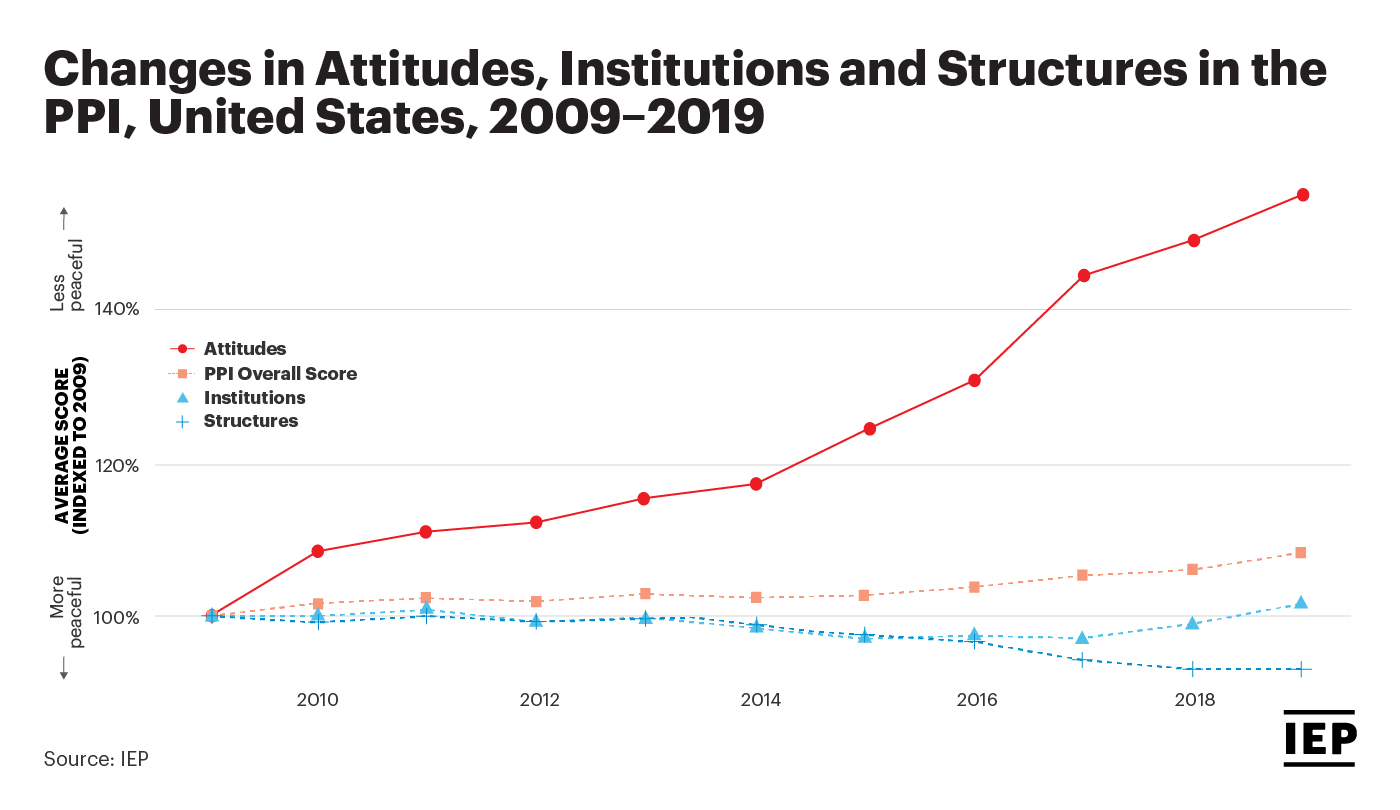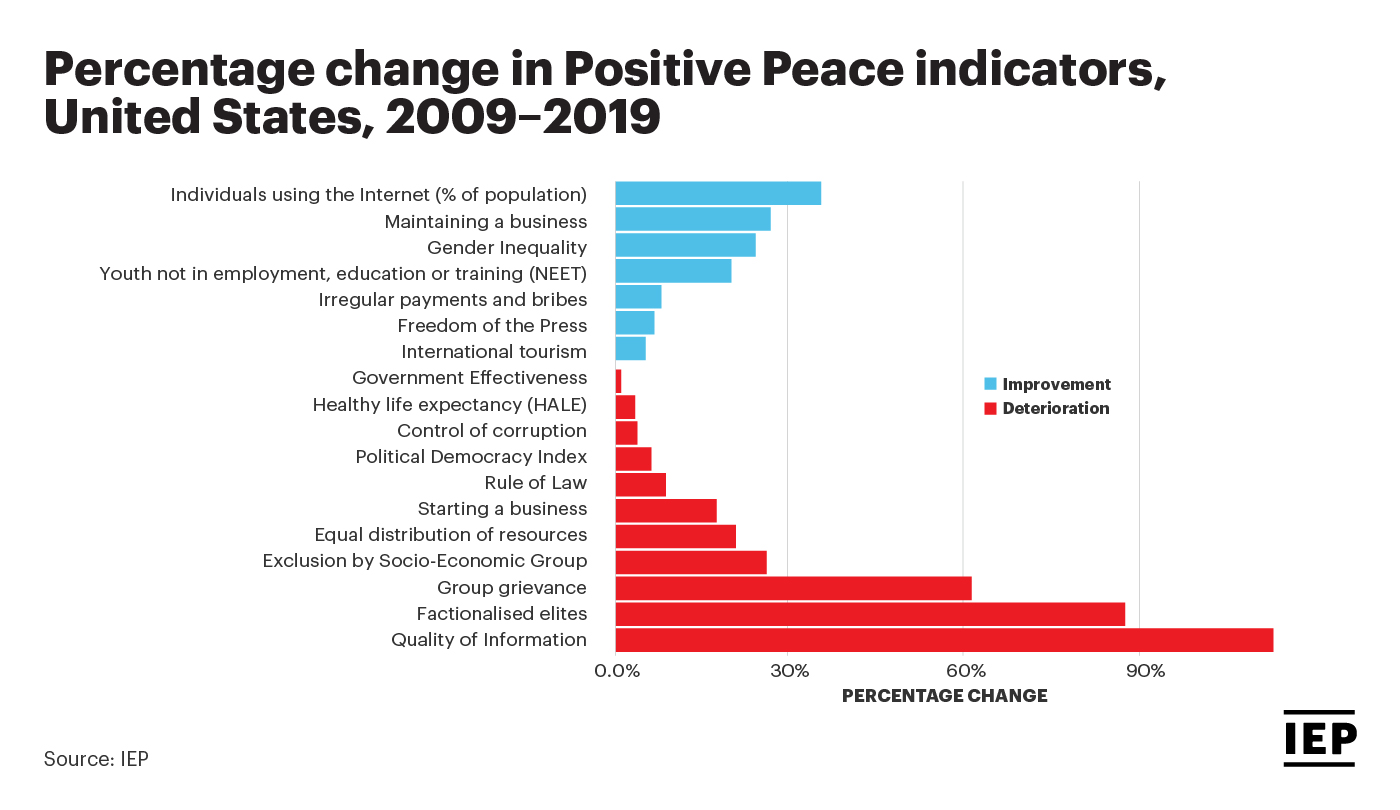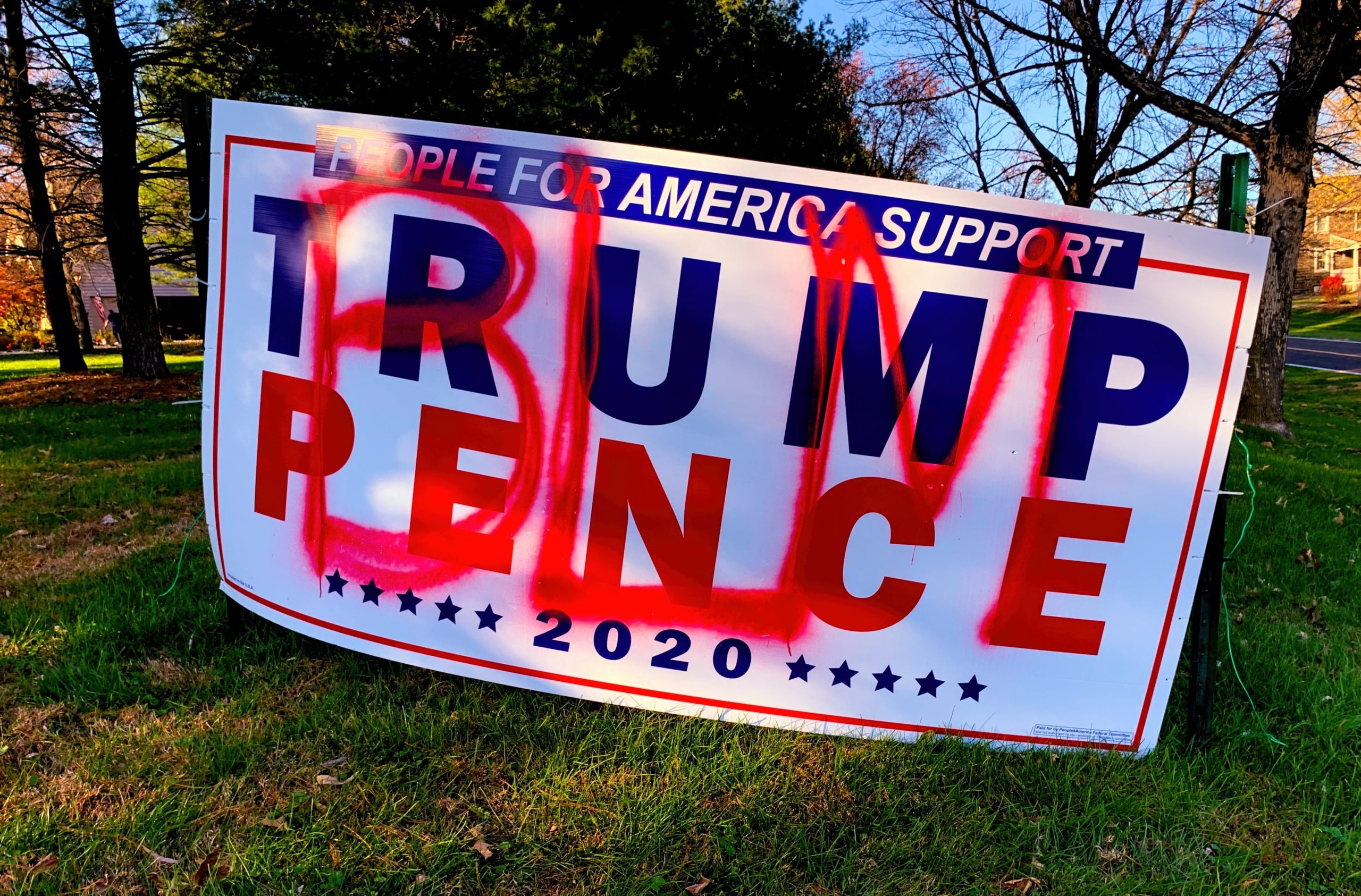“The building of partisan antipathy has become a primary tool for motivating US voters, sustaining partisan polarisation and contributing to factional division.” – Julie Pedersen
The 2020 Positive Peace Report (PPR) has shown a slow and steady deterioration in US Positive Peace rates since 2009. This is particularly the case from 2015 onwards.
The largest deterioration of peace was found in the attitudes and institutions domains of the Positive Peace Index.

The report suggests that the data reflects the widening gap between political and social groups and the radicalisation of views. These deepening divides are connected in part to the country’s changing landscape of information, media and politics.
What follows is a breakdown of the three indicators showing the most extreme deteriorations. Furthermore, we address how they have substantially affected the country’s worsening Positive Peace score.

The Quality of Information Indicator is “measured by Government dissemination of false information domestically: How often governments disseminate false or misleading information.”
The 2020 Positive Peace Report found that this indicator deteriorated most substantially compared to the other indicators. It showed the most extreme decline with a 100 per cent deterioration from 2009 to 2019.
During this period, the US was led by President Barack Obama until 2016, and from then on, by President Trump.
The growth in popularity of social media channels and the increase in use of these platforms over this time allowed for information to be amplified and shared like no other period in history.
In 2005, just 5% of American adults used social media. By 2011, that share had risen to half of Americans. By 2019, 72% of Americans used social media.
Social media affects the quality of information by allowing a rapid circulation of news and information to large audiences.
A 2018 article by Simon Aral, Soroush Vosoughi and Deb Roy in the Journal Science found that false stories were 70% more likely to be re-tweeted than true stories. False stories are also six times faster in reaching an audience of 1,500 people.
Psychology professor Geoffrey Beattie from Edgehill University compares the spread of misinformation to gossip. He told the BBC “people want to share information that is newsworthy – in some sense the truth value is less of a concern”.
In addition, a 2014 Pew Research Center report documented that the news and content people see is affected by the people and sites you follow. They also assess your past activity on the site.
According to Pew, this has the effect of creating ideological bubbles that overexposes people to like-minded views while excluding viewpoints different from their own.
Several academic studies finds that the quality of information spread through social media can contribute to societal division and polarisation. Spreading misinformation can drive users towards increasingly extreme content, potentially leading to online radicalisation.
The group grievances indicator is defined by IEP as “the extent and severity of grievances between groups in society, including religious, ethnic, sectarian and political discrimination and division.”
This indicator underwent the third largest deterioration compared to all pillars with a decline of over 60 per cent from 2009.
In the US, group grievances are particularly strong along political lines. The online political environment is deeply polarised and defined by partisan hostility.
In 2017, the partisan divide in values was wider than at any other point in the past two decades. When asked to describe their political counterparts, the majority of Conservatives and Democrats used negative words to describe one another.
‘Close-minded’, ‘unpatriotic’, ‘immoral’, ‘lazy’ and ‘unintelligent’ were frequently used by both parties.
Particularly during the 2016 election cycle, social media users were found to hold highly negative views of the opposing party and its members. Furthermore, they found little common ground with those they agree with politically.
Grievances between social groups have also been exacerbated by the state of economic disparity in the US following the 2008 global financial crisis.
However, Pew Research Center has found that economic inequality has continued to widen since as far back as 1980.

The Factionalised Elites indicator “measures the fragmentation of state institutions along ethnic, class, clan, racial or religious lines.” This pillar displayed the second largest deterioration out of the three selected indicators. Our data indicates a near 90% change from 2009 to 2019.
The New York Times reports that anger and the building of partisan antipathy has become a primary tool for motivating US voters. Apathy sustains this partisan polarisation and contributes to factional division.
The deepening factional divide between the Left and Right pose a challenge to democracy. Increased disagreements and unwillingness to compromise on legislation are among the challenges.
For 34 days, from December 22, 2018 until January 25, 2019, the US Federal Government saw the longest government shutdown in history. The shutdown occurred when former President Trump could not agree on a bill to fund the border wall.
These once rare government shutdowns have reportedly become more frequent than ever. Many look to the increased polarisation and factional elite division as the explanation.